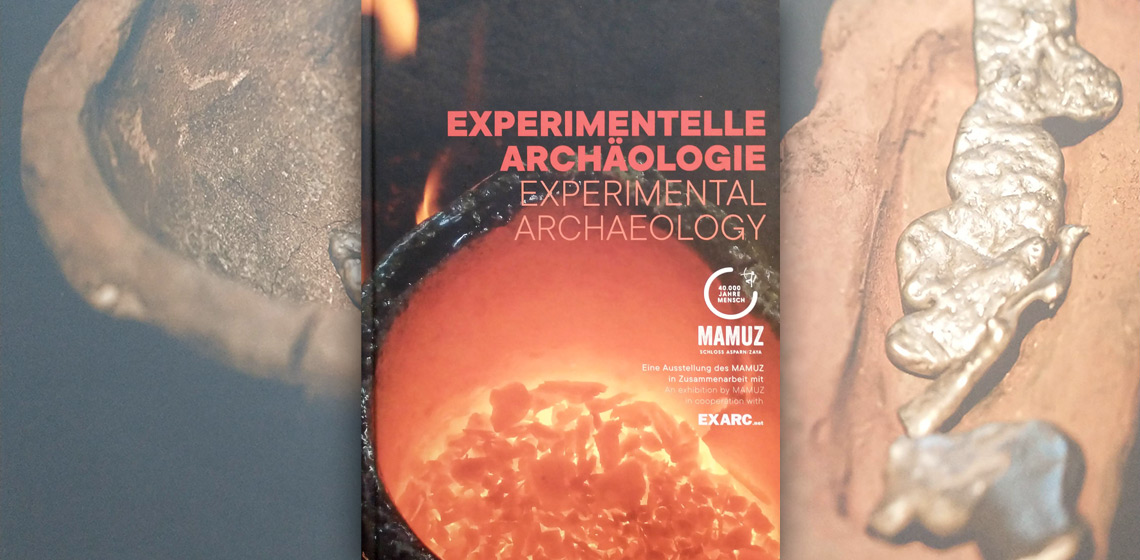The content is published under a Creative Commons Attribution Non-Commercial 4.0 License.
Unreviewed Mixed Matters Article:
Book Review: Exhibition Catalogue on Experimental Archaeology by Mamuz

The Mamuz Schloss Asparn/Zaya, Austria, is best known for its archaeological open-air site with reconstructed buildings and an active experimental archaeology program. In 2021, MAMUZ designed a traveling exhibition on experimental archaeology, in collaboration with EXARC, who assisted with the provision of experimental archaeologists. Therefore, many of the authors of the exhibition are EXARC members or had previously presented at EXARC conferences.
The exhibition presents experiments in areas such as ceramic production, wood technology, bronze casting, glass bead making, textile handicrafts, bone working and metallurgy. The bilingual exhibition catalogue, published in English and German, presents these 25 experiments in about four pages each. The catalogue (and the exhibition) provide visitors with a good sample of the hands-on part of archaeology.
This exhibition is not the first of its kind. In 1990, professor Fansa, at that time in Oldenburg, took the initiative for an experimental archaeology exhibition which toured a long time, and with its annual conferences and proceedings led to the German association on experimental archaeology, EXAR (see www.exar.org).
The current exhibition by MAMUZ is different; it is not structured in material categories but each article presents an experiment on its own, sometimes part of a larger series, like Osipowicz’ birch tar production, or Auenmüller et al.’s series on casting cat heads. Lobisser’s article on wood technology of the Early Neolithic Period can also best be seen within his long career of building wooden constructions based on archaeology in and around Austria. Unfortunately, space within the catalogue is too limited to make reference to the larger picture. The catalogue provides a teaser of what is happening in the fascinating world of experimental archaeology.
With some more preparation the catalogue could have included various other experiments, like from Brazil or Russia. There are only few leads for further reading, or contacts to organisations beyond EXARC itself. This larger picture is what is missing the most; to step away from the flintknapping area, from the glass smelting furnace or the weaving loom, and see the relevance of experimental archaeology beyond these, albeit fascinating, examples. And what about the human factor - looking at who does these experiments and the motivation behind the experiments. The message could have been about how important and relevant experimental archaeology is. Unfortunately, the catalogue feels a bit insular and too fragmented.
Having said that, this exhibition and the catalogue is very evocative and has the possibility to reach the wider public, especially if one adds hands-on activities in the museum garden where visitors can get the chance to participate in experiments. A simple website could be a powerful add-on, showing what else is happening in experimental archaeology. I wish the exhibition safe travels!
Book information:
Christoph Mayer, Gabriele Langer (eds), 2021. Experimentelle Archaeologie, experimental archaeology, WMB, Weinviertel Museum Betrieb GmbH
ISBN 978-9504468-7-6, Mistelbach, 176 pp. 24,95 EUR (excl. P&P) via buchung@mamuz.at.
Keywords
Country
- Austria

